Edition 7 of “This May Be a Dumb Question, but…” – Audio 101
Blog Series written by Exertis Almo's Ashley Nichols, CTS, DSCE & John Borns, CTS, DSCE.
Welcome to Issue 7 of “This may be a dumb question, but…”. This week, we’re going to tackle some basic questions with audio. This should be a fun one since neither of us would really call ourselves “audio experts.” Luckily, we have a whole team of audio experts on staff at Exertis Almo who will tell us about all of the things we got wrong. 😅 We’re going to share the ways we’ve come to understand some basic principles of audio that we’ve gathered by asking some dumb questions. Below are two questions we hear most frequently from newbies (like us), so hopefully these basic answers will help you feel empowered enough to dig a little deeper and expand that audio knowledge!
QUESTION
What’s the difference between 8ohm vs. 70-volt audio systems?
ANSWER
We will start by saying this: One is not better than the other, no matter what you hear. They are made for different situations and require different levels of sophistication and wiring. This is where your “needs analysis” also comes in, because you can save yourself a lot of unnecessary work if you ask: Is audio the driving NEED of the space, or is it just adding to the experience? Do you need to be able to scale the system later, or cover large areas now? How many audiophiles7 will be in the room to tell you that you chose the wrong brand? All important questions. Here is a chart to help you get an ‘at a glance’ feel for which system could be right for you:
| 8ohm | 70v | |
|---|---|---|
| Flexibility | May require larger changes to the system if you add/remove speakers | Most flexible, can add/subtract a few speakers without issue typically |
| Sound Quality | Best | Just Fine |
| Cost Effectiveness | Less Expensive | More Expensive |
| Scalability | Not ideal for large spaces/long distances | Best for large spaces/longer cable runs |
| Ease of Install | Straight forward wiring, less components | Relatively easy but may require additional components that add to the cost, time, and attention to detail |
| Room Size | Smaller Spaces | Large spaces, multi zone, etc. |
As I said at the beginning, neither of these are truly “better” than the other. Like all of us, they just shine brighter when they are used in the right space at the right time. In another episode, we would be happy to go over the wiring differences between the two in more detail, so drop a line in the request section if you think that would be beneficial to you!
QUESTION
What’s the difference between mic level and line level audio?
ANSWER
If you’re a seasoned audio veteran, this probably sounds like the simplest question possible. Well, for someone like me who broke into the industry selling cables, it took me a while to fully understand what the difference is between these, and when/how to work with each one. 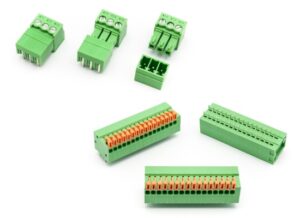 For me, I was always looking for the connectors on the cables to give me some sort of indication as to what signal they were sending, and to a certain degree they do. An XLR mic cable is GENERALLY used to for mic level audio, but not always. In many cases, there aren’t cable connectors at all, sometimes there’s just PHEONIX1 block connectors. Anyway, it became clearer to me when I learned that they’re all pretty much the same signal just at different voltage levels.
For me, I was always looking for the connectors on the cables to give me some sort of indication as to what signal they were sending, and to a certain degree they do. An XLR mic cable is GENERALLY used to for mic level audio, but not always. In many cases, there aren’t cable connectors at all, sometimes there’s just PHEONIX1 block connectors. Anyway, it became clearer to me when I learned that they’re all pretty much the same signal just at different voltage levels.
- Mic Level – I was absolutely floored when I first learned that mic level signals are the signal that is produced by a microphone. I know it sounds crazy, but it’s true. Anyway, microphones are sensitive and produce very low signals, usually measured in mVa (millivolts)2. This signal would not be strong enough to produce and audio signal that you could do anything useful or be able to hear at all.
- Line Level – The mic level audio signal that we just mentioned will need an audio device to bring that voltage of that signal up to line level. I personally think that line level would be better referred to as “Do Stuff Level”, because this is audio engineers like “do stuff” with the audio signal. Mixing, processing, recording, etc. are all done at line level. Ask Tom Kehr and he will agree that we should start referring to this as the “Do stuff level”. These signals are stronger, usually measured in 1V (volt). Once the signal has been processed and has all of the stuff done to it, it’s ready to be sent out to an amplifier which will bring it to speaker level.
- Speaker Level – Get this: this is the signal level used to power speakers. The voltage4 is much stronger than line level, usually measured between 10V and 100V. The power of this signal is strong enough to move the physical cones in the speakers to produce the sweet sounds of the Taylor Swift concert that Ashley couldn’t get tickets for (not for lack of trying).
 So, really, an audio signal is just like a little hobbit making a journey through Middle Earth. It leaves the Shire weak, but full of ambitions (mic level), it journeys through Middle Earth where it “does a bunch of stuff” (line level) before it finally reaches its final destination in Mordor (speaker), where it finally gets to dunk the ring of power into the fires of Mount Doom and achieve the righteous sounds of a fully produced audio experience.
So, really, an audio signal is just like a little hobbit making a journey through Middle Earth. It leaves the Shire weak, but full of ambitions (mic level), it journeys through Middle Earth where it “does a bunch of stuff” (line level) before it finally reaches its final destination in Mordor (speaker), where it finally gets to dunk the ring of power into the fires of Mount Doom and achieve the righteous sounds of a fully produced audio experience.
Vocab Test Time!
Are these the most detailed definitions? No – we are not a dictionary, nor the AVIXA CTS Prep book. Will someone message us after still telling us how much we missed? Possibly. Will these get you a basic working knowledge of these terms and why they matter? 😄 We hope so. Plus, we are 99% sure one of these words will be on your kids’ back to school pop quiz!
- Phoenix Block – a.k.a. Euroblock, a.k.a. combicon, essentially a low voltage terminal block commonly used in mic or line level audio signals, but you can also see it in RS232 or RS485 control signals as well.
- mVa or Millivolts – one-thousandth of a volt
- Milli Vanilli – French-German R&B group that rose to fame and fell to infamy in the last 80’s-early 90’s.
- Voltage (E). – The difference in charge between two points, caused by the pressure that forces the current to flow. Voltage is measured in volts.
- Current (I). – The rate at which the current flows. Current is measured in amperes, which are also referred to as amps.
- Resistance (R). – The rate at which a material resists the current’s flow. Resistance is measured in ohms.
- Audiophile – A person with A LOT of passion and enthusiasm around high-quality audio experiences.




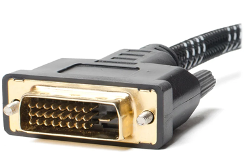

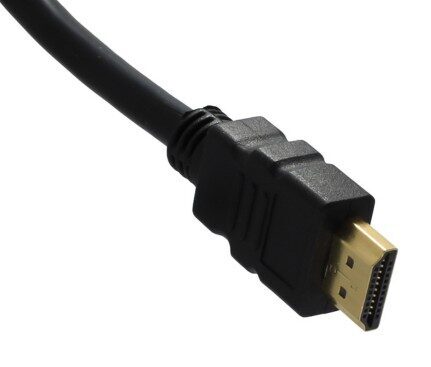
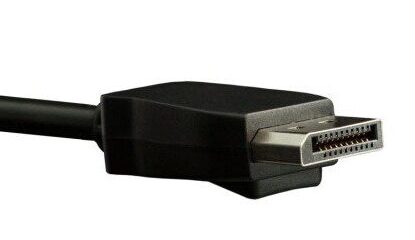
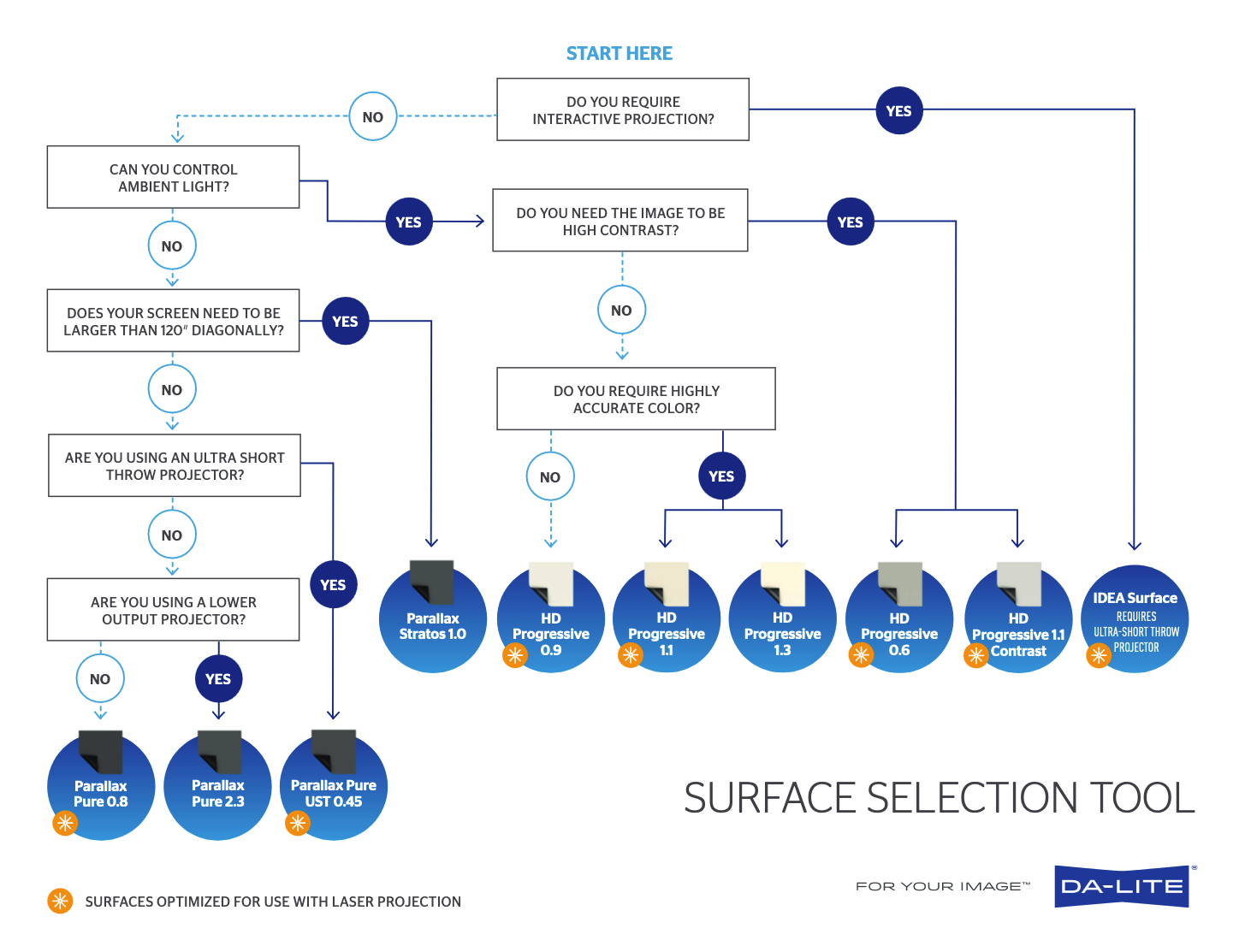
 Wall-Mounted Racks – There a few different uses here. Mainly, if you have smaller rack need…something like 8-10 RUs….it may be easier to access the gear for use or service by having it hanging off of the wall at eye level. Bending down or kneeling to get to the gear can be an unwanted nuisance, especially if the gear is being accessed routinely. Additionally, maybe you want to keep the gear away from small people with bad intentions – kids. Wall-mounted racks are used in classroom applications. Also, simply having the rack secured to the wall can save space in some locations and may help keep a cluttered closet a little more organized.
Wall-Mounted Racks – There a few different uses here. Mainly, if you have smaller rack need…something like 8-10 RUs….it may be easier to access the gear for use or service by having it hanging off of the wall at eye level. Bending down or kneeling to get to the gear can be an unwanted nuisance, especially if the gear is being accessed routinely. Additionally, maybe you want to keep the gear away from small people with bad intentions – kids. Wall-mounted racks are used in classroom applications. Also, simply having the rack secured to the wall can save space in some locations and may help keep a cluttered closet a little more organized.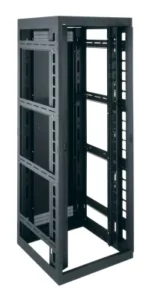 2-Post Racks vs 4-Post Racks – Generally speaking, in AV applications, you won’t commonly use 2-posts racks. These are typically used in network-based applications with thinner patch panels and lots of wire management needs. 4-post racks are sturdier and can handle heavier AV gear like your amplifiers, DSPs, Mixers etc. Also, 4-posts racks can be more easily built into larger cabinets, which gives them additional options that may improve your system. Speaking of which…
2-Post Racks vs 4-Post Racks – Generally speaking, in AV applications, you won’t commonly use 2-posts racks. These are typically used in network-based applications with thinner patch panels and lots of wire management needs. 4-post racks are sturdier and can handle heavier AV gear like your amplifiers, DSPs, Mixers etc. Also, 4-posts racks can be more easily built into larger cabinets, which gives them additional options that may improve your system. Speaking of which… An important reminder is to make sure that you convert feet to inches (or vice versa) when doing your calculations. I’m commonly ask to recommend a screen for 125” wide screen that’s being mounted 15’ away. It would not look great for me to recommend a 1875:1 lens here – which is what you get if you don’t convert 15 feet into 180 inches. More commonly, I get requests such as, “I want to use XYZ projector, I have 164-inch diagonal screen and am mounting this 15ft away: which lens do I need?” I don’t know the width, but I do know the diagonal, so I can either ask for the width to be exact, or I can head over to this tool:
An important reminder is to make sure that you convert feet to inches (or vice versa) when doing your calculations. I’m commonly ask to recommend a screen for 125” wide screen that’s being mounted 15’ away. It would not look great for me to recommend a 1875:1 lens here – which is what you get if you don’t convert 15 feet into 180 inches. More commonly, I get requests such as, “I want to use XYZ projector, I have 164-inch diagonal screen and am mounting this 15ft away: which lens do I need?” I don’t know the width, but I do know the diagonal, so I can either ask for the width to be exact, or I can head over to this tool: 




